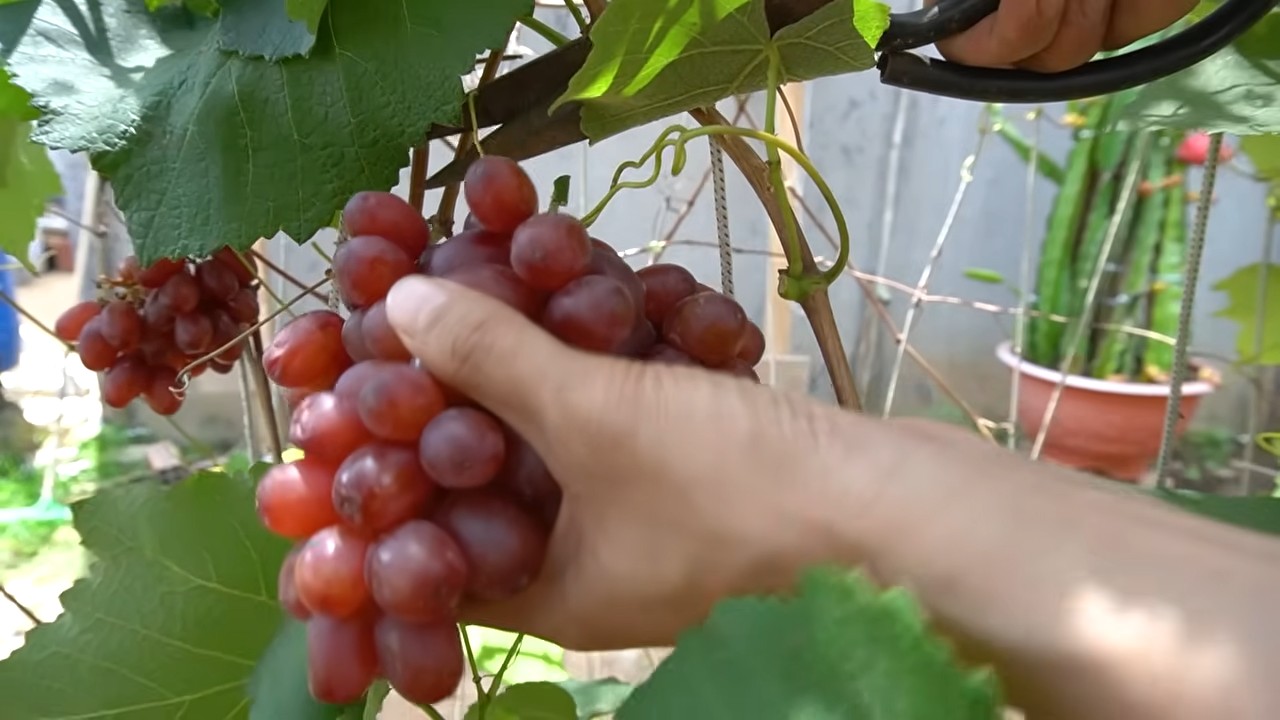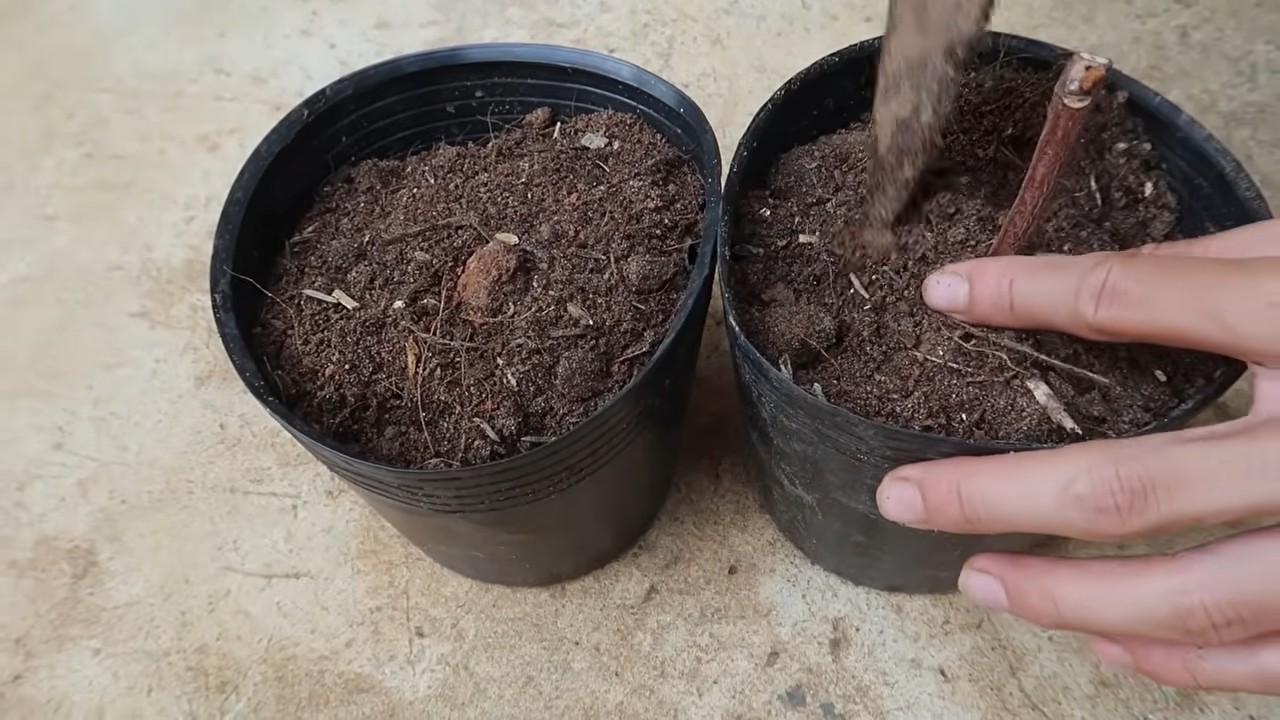Growing grapes indoors might sound like a whimsical dream reserved for sprawling vineyards, but I’m here to tell you it’s absolutely achievable, even if you only have a sunny windowsill! Forget the sprawling Tuscan countryside; we’re bringing the vineyard to you, one pot at a time. For centuries, grapes have symbolized abundance, prosperity, and celebration, featuring prominently in cultures from ancient Greece to modern-day wine regions. Imagine harvesting your own juicy, sweet grapes right from the comfort of your home – a truly rewarding experience!
But why bother with the effort of growing grapes indoors? Well, for starters, it allows those of us with limited outdoor space to enjoy the fruits (pun intended!) of our labor. Plus, you gain complete control over the growing environment, shielding your precious vines from pests, diseases, and unpredictable weather. Growing grapes indoors also offers a unique opportunity to connect with nature, learn about plant life cycles, and impress your friends with your green thumb prowess. So, grab your gardening gloves, and let’s embark on this exciting journey together! I’m going to share some simple yet effective DIY tricks and hacks that will transform your home into a miniature vineyard, yielding delicious grapes you can proudly call your own.

Growing Grapes Indoors: A Comprehensive Guide
Hey there, fellow plant enthusiasts! Ever dreamt of having your own little vineyard right inside your home? Well, dream no more! Growing grapes indoors is totally achievable, and I’m here to guide you through every step of the process. It might seem daunting, but trust me, with a little patience and the right know-how, you’ll be enjoying homegrown grapes in no time.
Choosing the Right Grape Variety
First things first, not all grape varieties are created equal when it comes to indoor growing. You’ll want to pick a type that’s well-suited for container gardening and can tolerate the somewhat limited sunlight we often have indoors. Here’s what to look for:
* Dwarf or Compact Varieties: These are your best bet. They’re bred to stay smaller and more manageable, perfect for pots. Look for varieties like ‘Thompson Seedless’ (though it might need extra care for pollination), ‘Himrod Seedless,’ or ‘Vanessa Seedless.’
* Disease Resistance: Indoor environments can sometimes be prone to fungal diseases due to less air circulation. Choosing a disease-resistant variety will save you a lot of headaches.
* Early-Ripening Grapes: Since indoor growing conditions might not be as optimal as outdoors, selecting a variety that ripens relatively early will increase your chances of a successful harvest.
* Consider the Taste: Ultimately, you want to grow grapes you’ll actually enjoy eating! Research the flavor profiles of different varieties and choose one that appeals to your palate.
Essential Supplies You’ll Need
Before we dive into the planting process, let’s gather all the necessary supplies. Having everything on hand will make the whole experience much smoother.
* Large Container: Grapes need room to grow! Choose a pot that’s at least 15-20 gallons in size. Make sure it has drainage holes to prevent waterlogging.
* Well-Draining Potting Mix: Regular garden soil is too heavy for containers. Opt for a high-quality potting mix that’s specifically formulated for container gardening. A mix containing peat moss, perlite, and vermiculite is ideal.
* Grapevine: Purchase a healthy, one-year-old grapevine from a reputable nursery. Look for a vine with a strong root system and no signs of disease.
* Trellis or Support System: Grapes are vines, so they need something to climb on. A trellis, stake, or even a sturdy tomato cage will work.
* Grow Lights (Optional but Recommended): If you don’t have a south-facing window that receives at least 6-8 hours of direct sunlight per day, you’ll need grow lights to supplement the natural light.
* Pruning Shears: Sharp pruning shears are essential for maintaining the shape of your grapevine and promoting fruit production.
* Fertilizer: Use a balanced, slow-release fertilizer specifically formulated for fruit trees or grapevines.
* Watering Can or Hose: For watering your grapevine.
* pH Meter (Optional): To check the pH level of your soil. Grapes prefer a slightly acidic soil pH of around 6.0-7.0.
Planting Your Grapevine
Alright, let’s get our hands dirty! Planting your grapevine is a crucial step, so follow these instructions carefully:
1. Prepare the Container: Fill the bottom of the container with a layer of gravel or pebbles to improve drainage. This will help prevent root rot.
2. Add Potting Mix: Fill the container with the well-draining potting mix, leaving a few inches of space at the top.
3. Plant the Grapevine: Carefully remove the grapevine from its nursery pot. Gently loosen the roots to encourage them to spread out. Place the grapevine in the center of the container, making sure the top of the root ball is level with the soil surface.
4. Backfill with Soil: Fill in the remaining space around the grapevine with potting mix, gently pressing down to eliminate any air pockets.
5. Water Thoroughly: Water the grapevine thoroughly until water drains out of the drainage holes. This will help settle the soil and hydrate the roots.
6. Install the Trellis: Position the trellis or support system in the container, making sure it’s sturdy and can support the weight of the growing vine.
7. Mulch (Optional): Add a layer of organic mulch, such as wood chips or straw, around the base of the grapevine to help retain moisture and suppress weeds.
Providing the Right Growing Conditions
Now that your grapevine is planted, it’s time to create the ideal growing environment for it to thrive.
1. Sunlight: Grapes need plenty of sunlight to produce fruit. Aim for at least 6-8 hours of direct sunlight per day. If you don’t have enough natural light, supplement with grow lights. Place the grow lights about 12-18 inches above the grapevine.
2. Temperature: Grapes prefer temperatures between 60-80°F (15-27°C) during the growing season. Avoid exposing your grapevine to extreme temperature fluctuations.
3. Watering: Water your grapevine regularly, especially during hot, dry weather. The soil should be consistently moist but not waterlogged. Check the soil moisture by sticking your finger into the soil. If the top inch feels dry, it’s time to water.
4. Humidity: Grapes prefer moderate humidity levels. If the air in your home is too dry, you can increase the humidity by placing a tray of water near the grapevine or using a humidifier.
5. Fertilizing: Fertilize your grapevine regularly during the growing season with a balanced, slow-release fertilizer. Follow the instructions on the fertilizer package. Avoid over-fertilizing, as this can lead to excessive vegetative growth and reduced fruit production.
Pruning and Training Your Grapevine
Pruning is essential for maintaining the shape of your grapevine, promoting fruit production, and preventing disease.
1. First Year: During the first year, focus on establishing a strong trunk. Choose the strongest shoot and train it to grow up the trellis. Remove any other shoots that emerge from the base of the plant.
2. Second Year and Beyond: Prune your grapevine in late winter or early spring, before new growth begins. Remove any dead, damaged, or diseased wood. Shorten the main trunk to about 2-3 feet. Select 2-4 strong canes (the previous year’s growth) and prune them back to about 6-8 buds each. These canes will produce the fruit. Remove any other canes.
3. Training: As the grapevine grows, train the canes along the trellis. Use plant ties or twine to secure the canes to the trellis.
Pollination
Some grape varieties are self-pollinating, while others require cross-pollination. If you’re growing a self-pollinating variety, you don’t need to worry about pollination. However, if you’re growing a variety that requires cross-pollination, you’ll need to hand-pollinate the flowers.
1. Hand-Pollination: Use a small paintbrush to transfer pollen from one flower to another. Gently brush the pollen from the stamen (the male part of the flower) to the pistil (the female part of the flower). Repeat this process for all the flowers on the grapevine. You can also use a small fan to circulate air around the flowers, which can help with pollination.
Pest and Disease Control
Even indoors, your grapevine can be susceptible to pests and diseases. Here’s how to prevent and control them:
1. Prevention: Inspect your grapevine regularly for signs of pests or diseases. Good air circulation and proper watering can help prevent many problems.
2. Pests: Common pests that can affect grapevines include aphids, spider mites, and mealybugs. If you find pests, you can try spraying them with insecticidal soap or neem oil.
3. Diseases: Common diseases that can affect grapevines include powdery mildew, downy mildew, and black rot. If you find signs of disease, you can try spraying the grapevine with a fungicide.
4. Organic Solutions: Whenever possible, opt for organic pest and disease control methods.
Harvesting Your Grapes
The moment you’ve been waiting for! Harvesting your grapes is the most rewarding part of the process.
1. Ripeness: Grapes are typically ready to harvest in late summer or early fall. The exact timing will depend on the variety and the growing conditions.
2. Signs of Ripeness: Look for grapes that are plump, juicy, and have a deep color. The grapes should also be easy to detach from the vine. Taste a few grapes to make sure they’re sweet and flavorful.
3. Harvesting: Use pruning shears to cut the grape clusters from the vine. Handle the grapes gently to avoid bruising them.
4. Storage: Store your harvested grapes in the refrigerator

Conclusion
So, there you have it! Growing grapes indoors might seem like a daunting task reserved for seasoned horticulturalists, but with a little patience, the right setup, and this straightforward DIY trick, you can absolutely cultivate your own miniature vineyard right in your home. We’ve demystified the process, breaking it down into manageable steps that anyone can follow, regardless of their prior experience with grape cultivation.
Why is this DIY trick a must-try? Because it empowers you to enjoy the fruits (literally!) of your labor, offering a unique and rewarding experience that connects you to the natural world, even within the confines of your living space. Imagine plucking fresh, juicy grapes from your own vine, knowing that you nurtured them from tiny seedlings to thriving fruit-bearing plants. The satisfaction is unparalleled. Beyond the personal gratification, growing grapes indoors allows you to control the growing environment, minimizing the risk of pests and diseases that often plague outdoor vineyards. You can tailor the conditions to perfectly suit your chosen grape variety, maximizing its potential for growth and fruit production.
But the benefits don’t stop there. This DIY approach is also incredibly cost-effective. Instead of relying on expensive store-bought grapes, you can invest in a few grapevines and the necessary supplies, and enjoy a continuous supply of fresh grapes for years to come. Plus, you’ll be reducing your carbon footprint by eliminating the need for transportation and packaging associated with commercially grown grapes.
Now, let’s talk about variations. While we’ve focused on a general approach, feel free to experiment with different grape varieties to find the ones that thrive best in your indoor environment. Some popular choices for indoor growing include ‘Thompson Seedless,’ ‘Reliance,’ and ‘Canadice.’ You can also explore different training methods, such as espalier or cordon training, to create visually stunning and space-saving displays. Consider using different types of containers, from traditional pots to hanging baskets, to add a touch of personality to your indoor vineyard.
Don’t be afraid to get creative and personalize your grape-growing experience. The key is to provide your grapevines with the essential elements they need to flourish: ample sunlight, well-draining soil, proper support, and consistent watering.
We are confident that with this DIY trick, you’ll be well on your way to enjoying a bountiful harvest of homegrown grapes. So, what are you waiting for? Gather your supplies, choose your grape variety, and embark on this exciting horticultural adventure.
We encourage you to try this DIY trick and share your experience with us! Post photos of your indoor vineyard on social media using #IndoorGrapesDIY and tag us so we can see your progress and celebrate your success. We’re eager to hear your tips, tricks, and any challenges you encounter along the way. Together, we can create a community of indoor grape growers and inspire others to embrace the joy of homegrown produce. Remember, growing grapes indoors is not just about the grapes themselves; it’s about the journey, the connection to nature, and the satisfaction of creating something beautiful and delicious with your own hands. Start your indoor grape growing journey today!
Frequently Asked Questions (FAQ)
What are the best grape varieties to grow indoors?
Choosing the right grape variety is crucial for success when growing grapes indoors. Some varieties are naturally more compact and adaptable to container growing than others. We highly recommend considering seedless varieties for ease of consumption. ‘Thompson Seedless’ is a popular choice due to its sweet flavor and seedless nature. ‘Reliance’ is another excellent option, known for its cold hardiness and disease resistance, making it a good choice for beginners. ‘Canadice’ is a red seedless grape that is also relatively easy to grow indoors. Consider the size of your growing space and the amount of sunlight available when selecting a variety. Research the specific needs of each variety to ensure you can provide the optimal growing conditions. Remember that some varieties might require cross-pollination, so you might need to grow two different varieties together to ensure fruit production.
How much sunlight do indoor grapevines need?
Sunlight is the lifeblood of any plant, and grapevines are no exception. Indoor grapevines require at least 6-8 hours of direct sunlight per day to thrive and produce fruit. South-facing windows are ideal, as they provide the most sunlight throughout the day. If you don’t have access to sufficient natural light, you’ll need to supplement with grow lights. LED grow lights are a great option, as they are energy-efficient and provide the full spectrum of light that plants need. Position the grow lights close enough to the vines to provide adequate illumination, but not so close that they burn the leaves. Monitor your vines closely and adjust the lighting as needed to ensure they are receiving enough light. Signs of insufficient light include leggy growth, pale leaves, and poor fruit production.
What type of soil is best for growing grapes in containers?
The right soil mix is essential for providing your grapevines with the nutrients and drainage they need to thrive. Avoid using garden soil, as it is often too heavy and compacts easily, which can lead to root rot. Instead, opt for a well-draining potting mix specifically formulated for containers. A good mix should consist of equal parts of peat moss, perlite, and vermiculite. You can also add some compost to the mix to provide additional nutrients. Ensure that the container has drainage holes to prevent waterlogging. Before planting, amend the soil with a slow-release fertilizer to provide a steady supply of nutrients to your vines. Regularly monitor the soil moisture and adjust your watering schedule as needed.
How often should I water my indoor grapevines?
Watering is a critical aspect of grape care. Overwatering can lead to root rot, while underwatering can stress the vines and reduce fruit production. The frequency of watering will depend on several factors, including the size of the container, the type of soil, the temperature, and the humidity. As a general rule, water your grapevines when the top inch of soil feels dry to the touch. Water deeply, until water drains out of the drainage holes. Avoid watering the foliage, as this can promote fungal diseases. During the growing season, you may need to water more frequently, especially during hot and dry weather. In the winter, when the vines are dormant, you can reduce the frequency of watering.
How do I prune my indoor grapevines?
Pruning is essential for maintaining the shape and productivity of your indoor grapevines. Pruning encourages new growth, improves air circulation, and allows sunlight to reach all parts of the vine. The best time to prune grapevines is during the dormant season, typically in late winter or early spring. Remove any dead, damaged, or diseased wood. Shorten the main branches to encourage lateral growth. Train the vines to grow along a trellis or support system. Be sure to research the specific pruning requirements of your chosen grape variety, as different varieties may require different pruning techniques.
How do I deal with pests and diseases on my indoor grapevines?
While growing grapes indoors can minimize the risk of pests and diseases, it’s still important to be vigilant and take preventative measures. Regularly inspect your vines for signs of pests, such as aphids, spider mites, and mealybugs. If you detect any pests, treat them promptly with insecticidal soap or neem oil. To prevent fungal diseases, ensure good air circulation around the vines and avoid overwatering. If you notice any signs of disease, such as powdery mildew or black rot, treat them with a fungicide. Consider using organic pest control methods whenever possible to minimize the risk of harming beneficial insects and the environment.
How long does it take for indoor grapevines to produce fruit?
The time it takes for indoor grapevines to produce fruit can vary depending on the variety, the growing conditions, and the age of the vine. Generally, it takes about 2-3 years for a grapevine to mature and begin producing fruit. However, some varieties may produce fruit sooner than others. Be patient and provide your vines with the best possible care, and you’ll eventually be rewarded with a bountiful harvest of homegrown grapes. Remember that proper pruning, fertilization, and watering are essential for promoting fruit production.
Can I grow grapes indoors year-round?
Yes, you can grow grapes indoors year-round, provided you can provide them with the necessary growing conditions. Grapevines require a period of dormancy in the winter to rest and prepare for the next growing season. To induce dormancy, reduce watering and fertilization and expose the vines to cooler temperatures (around 40-50°F) for several weeks. You can achieve this by moving the vines to a cooler room or garage. After the dormancy period, gradually increase watering and fertilization and move the vines back to their sunny location. With proper care, you can enjoy a continuous cycle of growth and fruit production year after year.




Leave a Comment